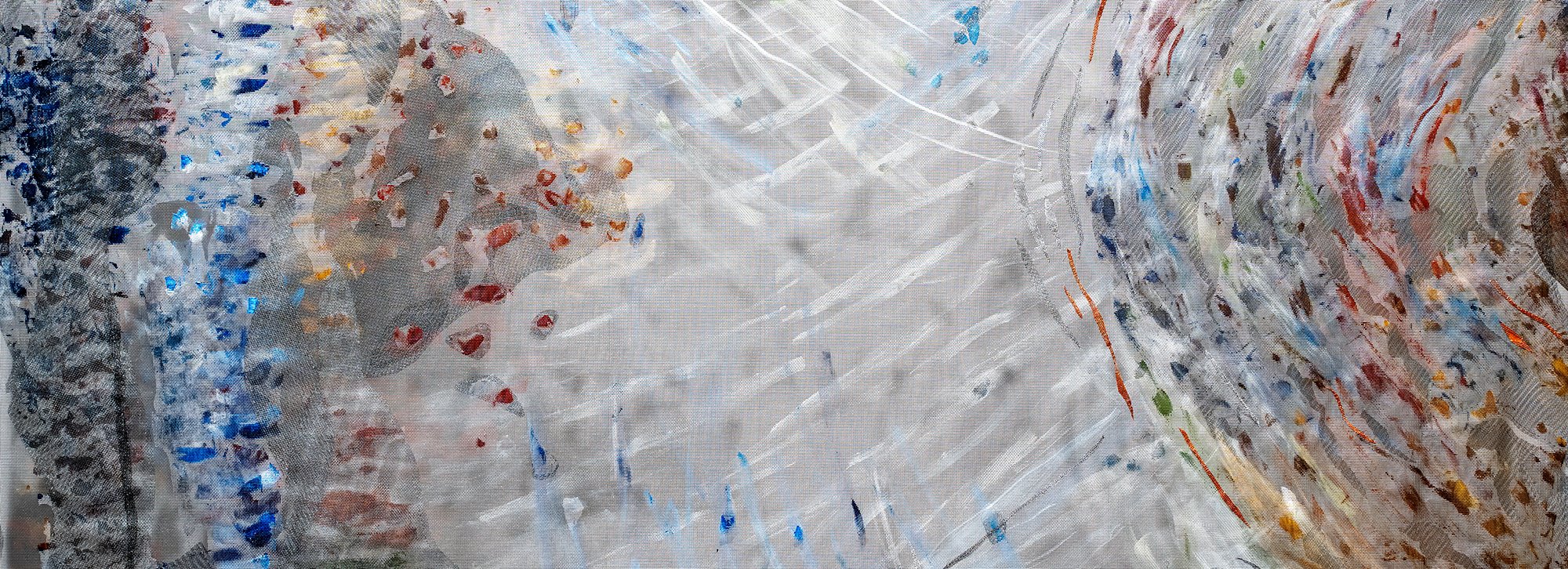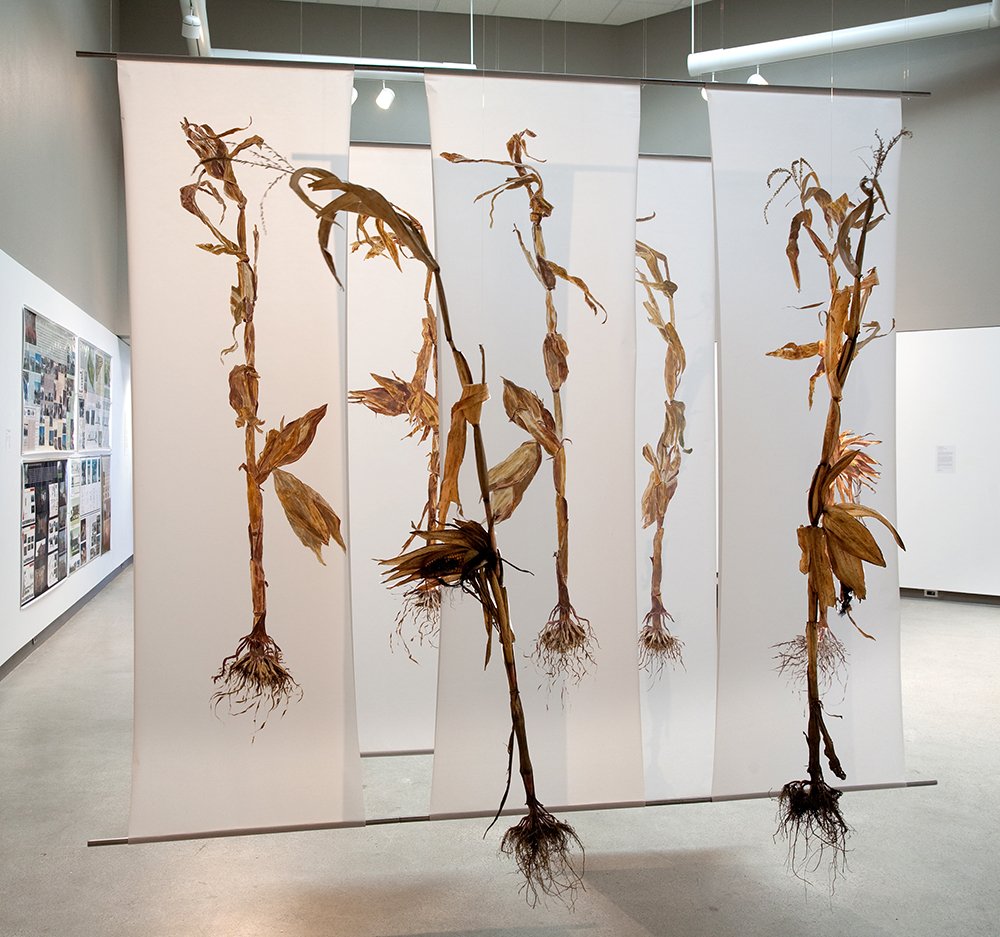
Artists Statement:
It’s all about Balance.
Elemental forces make marks upon the planet. Wind, sunlight, water, fire, and ice; all have a profound impact. Humanity too has changed the world in ways that are both vital and irrevocable. On the individual level humans make small marks: a fence, a pole, a furrow, a line. The wind polishes, fire bakes, water erodes, ice melts and humanity attempts to direct these forces to our own purposes. Human efforts affect the environment in ways that can be destructive or symbiotic. If we achieve a balance with these forces it can be sustainable. Yet we often only glimpse moments within the movement of these ageless cycles of activity and transformation. Suspending the motion, capturing it in my art-making allows me to highlight what otherwise might not be seen.
“I’m a Midwest Artist, born and bred.”
As an artist, I am inspired by the everyday, the ephemeral experiences in the world. Particularly in nature and environmental settings, and specifically in water. It informs how I look at things. Everything is in water. It’s fluid and active: It can be any color, reflecting, absorbing or illuminating. I am particularly intrigued by water’s surface, always flowing, changing, rising, moving–always in transition; one moment we capture it, the next moment it’s gone. The water, informed by the sky, the earth, the wind, is essential to our fundamental viability. It nourishes me.
I work in mixed media, and use the world as my palette. I practice observational drawing and use art-making as a tool to explore, learn, and comment on our roles and relationships in society. When making things I try to pare it down to the essentials. Details from nature intrigue me. Looking at natural ephemera up close alters one’s perception. It simplifies what we know and keeps us from being overwhelmed by too much information.
below: It's All In The Water, 2023, detail

“Joan has a very hands-on process as an artist…[she] considers how to put everything to use… and many of the things [she] is working with are common to a household… it does feel like her ‘kernels growing in a dixie cup’ process has so much experimentation going on every single day in her observations and her playing with items…”
- Amahia Mallea
Interview, Hearst Center for the Arts
Much of my work is a response to the natural environment in which we live. The systems and webs of relationships, the interplay navigated by living beings with the natural world, are all ways of living that balance the existential & essential need to survive and thrive.
“The Natural World Holds Lessons & Presents Challenges.”
Wishes Don’t Make It Happen / 2016. This installation was inspired by the story of the extinction of the passenger pigeon. Over 100 years ago, there was a great culling. Somewhere between 3-5 billion passenger pigeons vanished from the sky, a decline of a quarter of the bird population on this continent. There are written reports of the birds blocking out the sun as they flew overhead, a mile wide in formation, their flocking forms continuing as far as the eye could see. “Martha,” dubbed the last passenger pigeon, died in the Cincinnati Zoo on September 1, 1914. When I first learned about the enormity of this species extinction and how so few people knew of it, I felt compelled to respond. Life is about balance, what we do, the big or small choices we make can bring us to a tipping point. In the case of the passenger pigeon, decisions made over one hundred years ago drastically affected their odds of survival. One hundred years from now, how will we have tipped the scales again? What will be the results of decisions we are making today?
Wishes Don’t Make It Happen, 2016 / Installation, Art Prize 8, Grand Rapids, Michigan
Strong Roots / 2009. Thirty-eight years of my adult life were spent living at the edge of a small Iowa town across the road from a cornfield that spreads as far as the eye can see. I watched the corn grow from season to season without really considering its significance. I eat corn, it’s in the gasoline I use, I’ve even walked over to the field and made paintings of its long flowing furrows. But I had never planted it, considered its origin, or thought about how it has sustained and survived over time, persisting through thousands of growing seasons. I never questioned how corn stalks manage to stay upright imbedded in the land persisting—even thriving—through strong wind and rain and many other adverse circumstances.
Sustainability: how do things survive? I look at the root structure of a very tall thin plant and wonder how did it come to be this way? …root shooting out of root, shooting out of another root with numerous additional grabbing tentacles all together clinging to the soil. At the very heart of this plant is the will to survive. What is the connection between humanity and corn? What is the future of corn? How will it evolve? What will be the consequences of our interventions and bio-engineering, optimizing it for use as both fuel and sustenance? How will genetically altering it affect its future? …and ours?
Strong Roots, 2009 / Waldemar A. Schmidt Art Gallery, Wartburg College, Wartburg, Iowa
For the history of passenger pigeons see:
Joel Greenberg’s compelling book,
A Feathered River Across the SkyPeggy Notebart Nature Museum’s Project Passenger Pigeon website
In other threats to the natural environment, read the backstory to my installation:
The March of the Emerald Ash Borer

